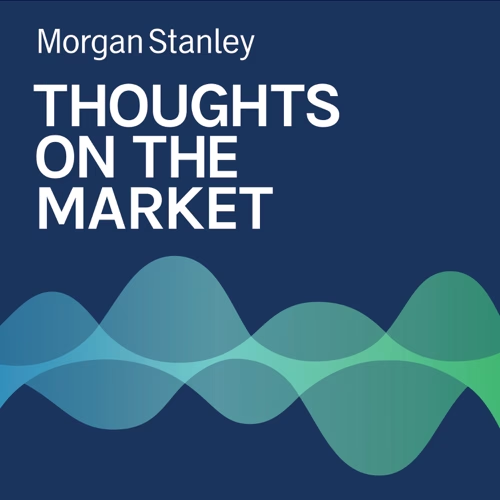
AI adoption, dollar weakness and tax savings from the Big Beautiful Bill are some of the factors boosting our CIO and Chief U.S. Equity Strategist Mike Wilson’s confidence in U.S. stocks.
Read more insights from Morgan Stanley.
----- Transcript -----
Welcome to Thoughts on the Market. I'm Mike Wilson, Morgan Stanley’s CIO and Chief U.S. Equity Strategist. Today on the podcast I will discuss what's driving my optimism on stocks.
It's Tuesday, July 29th at 11:30am in New York.
So, let’s get after it.
Over the past few weeks, I have been leaning more toward our bull case of 7200 for the S&P 500 by the middle of next year. This view is largely based on a more resilient earnings and cash flow backdrop than anticipated. The drivers are numerous and include positive operating leverage, AI adoption, dollar weakness, cash tax savings from the Big Beautiful Bill, and easy growth comparisons and pent-up demand for many sectors in the market.
While many are still focused on tariffs as a headwind to growth, our analysis shows that tariff cost exposures for S&P 500 industry groups is fairly contained given the countries in scope and the exemptions that are still in place from the USMCA. Meanwhile, deals are being signed with our largest trading partners like Japan and Europe that appear favorable to the U.S.
Due to the lack of pricing power, the main area of risk in the stock market from tariffs is consumer goods; and that’s why we remain underweight that sector. However, the main tariff takeaway for investors is that the rate of change on policy uncertainty peaked in early April. This is the primary reason why earnings guidance bottomed in April as evidenced by the significant inflection higher in earnings revisions breadth—the key fundamental factor that we have been focused on.
Of course, the near-term set up is not without risks. These include still high long-term interest rates, tariff-related inflation and potential margin pressure. As a result, a correction is possible during the seasonally weak third quarter, but pull-backs should be shallow and bought. In addition to the growth tailwinds already cited, it’s worth pointing out that many companies also face very easy growth comparisons.
I’ve had a long standing out of consensus view that the U.S. has been experiencing a rolling recession for the last three years. This fits with the fact that much of the soft economic data that has been hovering in recession territory for much of that period as well—things like purchasing manager indices, consumer confidence, and the private labor market. It also aligns with my long-standing view that government spending has helped to keep the headline economic growth statistics strong, while much of the private sector and many consumers have been crowded out by that heavy spending which has also kept the Fed too tight.
Meanwhile, private sector wage growth has been in a steady decline over the last several years, and payroll growth across Tech, Financials and Business Services has been negative – until recently. Conversely, Government and Education/Health Services payroll growth has been much stronger over this time horizon. This type of wage growth and sluggish payroll growth in the private sector is typical of an early cycle backdrop. It's a key reason why operating leverage inflects in early cycle environments, and margins expand. Our earnings model is picking up on this underappreciated dynamic, and AI adoption is likely to accelerate this phenomenon. In short, this is looking more and more like an early cycle set up where leaner cost structures drive positive operating leverage after an extended period of wage growth consolidation.
Bottom line, the capitulatory price action and earnings estimate cuts we saw in April of this year around Liberation Day represented the end of a rolling recession that began in 2022. Markets bottom on bad news and we are transitioning from that rolling earnings recession backdrop to a rolling recovery environment.
The combination of positive earnings and cash flow drivers with the easy growth comparisons fostered by the rolling EPS recession and the high probability of the Fed re-starting the cutting cycle by the first quarter of next year should facilitate this transition. The upward inflection we're seeing in earnings revisions breadth confirms this process is well underway and suggests returns for the average stock are likely to be strong over the next 12-months.
In short, buy any dips that may occur in the seasonally weak quarter of the year.
Thanks for tuning in; I hope you found it informative and useful. Let us know what you think by leaving us a review. And if you find Thoughts on the Market worthwhile, tell a friend or colleague to try it out!
Senaste avsnitt
En liten tjänst av I'm With Friends. Finns även på engelska.